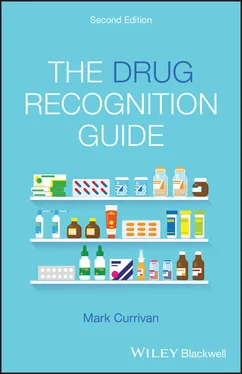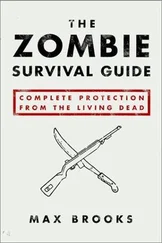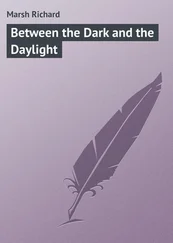This book is a directory of drugs, not a formulary; and so it avoids duplicating the functions of the British National Formulary ( BNF ) (Joint Formulary Committee, 2019) or similar tomes. Consequently, it does not profess to offer guidance to those who prescribe drugs; neither does it catalogue drug dosages, side effects or interactions. Such information is readily available in a host of other books on pharmacology. This book is different. It was tailor‐made in a format chosen by nursing students to meet particular educational needs identified by nursing students. This helped to ensure that the book's focus remains fixed on drug names and its demystifying and drug‐classifying aims.
Name stems are the crucial element in drug recognition. Being able to categorise medication on a prescription list – by identifying medicines by the letters used in the stem of their name (i.e., the drug's prefix or suffix) is like finding a key that unlocks all sorts of useful information. Knowing, for example, that only sulfonylureas have generic names beginning with ‘gli‐’ or that only antiviral drugs have generic names ending in ‘‐vir’ enables you to instantly recognise glipizide (see Chapter 8) as a drug to treat diabetes and aciclovir (see Chapter 9) as a drug to treat a viral infection… and knowledge, as they say, is empowering. The guide lists more than 700 drugs subdivided into more than 200 drug groups, categorised by class or usage. This book is intended for general guidance only, not as a way to identify every drug in every drug group; nevertheless, it should be invaluable to you while you are getting to know your drugs more thoroughly. So, if drugs and the way they work is still something of a mystery to you, then this little book will give you a head start and help you identify most of the key drugs that you will need to know. We hope that The Drug Recognition Guide will make pharmacology make sense to you and so play its part in helping you become a more knowledgeable and safer practitioner.
Drug names: generic/proprietary
Most drugs will have at least three names: a chemical name, a non‐proprietary (or generic) name and a proprietary (or brand) name. To prevent confusion to those who prescribe, dispense or administer drugs, the World Health Organisation (WHO) assigns a unique name to each and every medicine known as a recommended International Non‐proprietary Name (rINN). Recommended INNs are public property and promote standardisation and uniformity in regard to the identity of generic drugs all around the world.
Note that while a drug will have only one generic name – which will be recognisably similar in most parts of the world (allowing solely for differences in spelling when written in different languages) – this is not the case with proprietary names. A drug's proprietary name is the trademarked brand name given to it by the pharmaceutical company that manufactured the drug. Some older generic medicines that are out of patent may be made by a variety of different drug companies, which means that the same generic drug may have a variety of different brand names. The drug names that appear in this book refer – unless specifically stated otherwise – to generic INNs only.
Comparison of rINNs in English, French, Spanish, Portuguese and Italian
Atenolol (Eng; French; Spanish; Port); atenololo (Ital). Cimetidine (Eng; Fr); cimetidina (Sp; Port; Ital). Diclofenac (Eng; Fr; Ital); diclofenaco (Sp; Port). Furosemide (Eng; Fr; Ital); furosemida (Sp; Port). Omeprazole (Eng; Fr); omeprazol (Sp; Port; Ital). Penicillin (Eng); pénicilline (Fr); penicilina (Sp; Port). Prednisolone (Eng; Fr); prednisolona (Sp; Port; Ital). Tramadol (Eng; Fr; Sp; Port); tramadolo (Italian).
Drug names and design motifs
Drug companies use design motifs (in advertising, on promotional products and literature and on the drug box itself) in order to highlight the brand name of their particular product and to make the drug's name more distinct and recognisable. The logos and motifs used include emphasising the drug's brand name by using odd combinations of upper and lower‐case lettering; some divide the drug's name into segments or use different colours for each letter; some have parts of the name in italics; some use varying typeface styles, etc. The Drug Recognition Guide uses similar techniques (specifically, the colour highlighting of drug prefixesand suffixes) as a graphic device to make the generic drug names in this book as distinctive and memorable as the brand names seen on drug boxes.
Information about the guide
This is a book about drug names. It is about using the letters at the beginning or the end of a generic drug's name as a way to identify what type of drug it is and what it is for. When a new generic drug is being given its name, the WHO promotes the adoption of a ‘name stem’ (a prefix or suffix) that is the same as those of other drugs in the same drug class (World Health Organisation, 2013). INN stems, therefore, are helpful in revealing the connections between chemically and therapeutically related medicines. For example:
All ACE inhibitors are given names that end with the suffix ‘‐ ramipril’ (as in ramipril, see Chapter 2) and…
All cephalosporin class antibiotics have names beginning with the prefix ‘ cef‐’ (as in ceftriaxone, see Chapter 9), etc.
The easiest way to use the Drug Recognition Guide is to look in the Index of Drugs. This will give you the page (or pages) the drug is on and the pharmaceutical group to which it belongs. Soon you will begin to recognise patterns in the name stems of commonly prescribed drugs.
Many drug groups have name stems that are so distinctive that it is easy to use them as a way to distinguish one class from another. However, endings such as ‘‐ dine’, ‘‐ ide’, ‘‐ mine’, ‘‐ one’ (pronounced ‘own’), ‘‐ tine’, ‘‐ zine’ and ‘‐ zole’ are not uncommon in pharmacology and so cannot be used – in isolation – as a way to differentiate between drug groups. Accordingly, the Drug Recognition Guide recommends that readers take a more exact and all‐inclusive look at drug suffixes. For example: instead of just noting the ending ‘‐ zole’, the suffixes ‘‐ prazole’ and ‘‐ rozole’ respectively can be read to distinguish proton pump inhibitors (i.e., pantoprazole: see Chapter 1) from aromatase inhibitors (i.e., letrozole: see Chapter 10).

In situations where the letters used in the stem of one drug group are similar or, more rarely, the same as the letters used in the stem of another drug group, then a coloured background – as seen here – is used to highlight drugs that have names with similar lettering.
Colour‐highlighting a drug's name stem not only aids recognition but also (by appearing to visually segment the name) makes it easier to read – and therefore – easier to pronounce. For example, the antibacterial agent phenoxymethylpenicillin (see Chapter 9) becomes slightly easier to say with its suffix colour highlighted as phenoxymethylpenicillin.
1 Dilles, T., Vander Stichele, R., Van Bortel, L. et al. (2011). Nursing students' pharmacological knowledge and calculation skills: ready for practice? Nurse Education Today, 31 (5), 499–505.
Читать дальше













